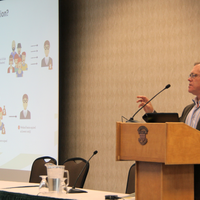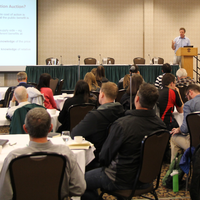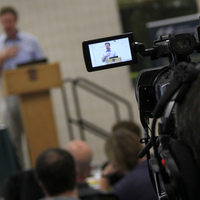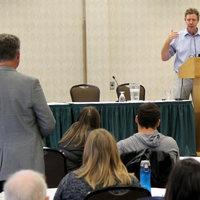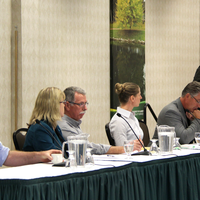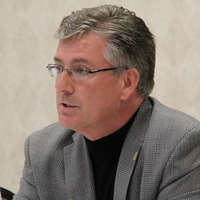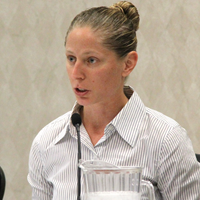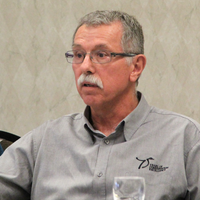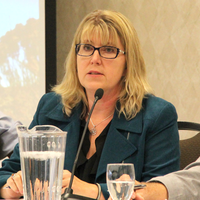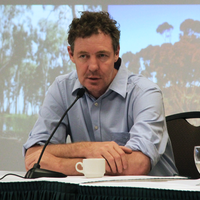Reversing the Auction: Conservation Auction Experiences in Australia
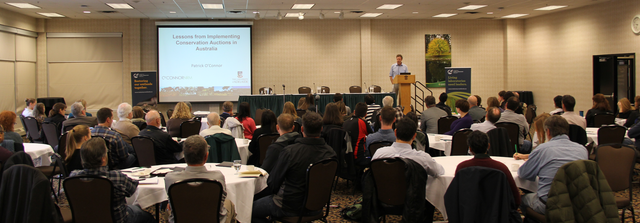
To watch the video of this event, click here.
Since the arrival of Europeans in Australia, the country's landscape has changed significantly. Agricultural development led to the clearing of vast wooded areas, and grazing animals have taken a toll on many types of vegetation –– even young trees. As the Australian Government works to protect the country's environment for future generations, it faces a difficult question: what is the best way to preserve and restore the ecology of the landscape?
Regulation is one option, and buying up land for conservation is another. However, both of those approaches can be costly, face compliance issues, and might have a considerable impact on the economics of farming in Australia. Is there a method through which the government can work with private landholders, encouraging them to change some of their practices in order to promote ecological improvements, at a lower cost and with a higher compliance rate?
Market-based instruments are increasingly becoming established as tools for conservation in Australia, and through programs like BushTender, reverse auctions are setting precedents that can be followed around the world. By engaging with landholders, and asking them to set the price for certain conservation-related activities, these auctions provide incentives for private participation, while efficiently utilizing conservation funds.
Dr. Patrick O’Connor, a consultant and adjunct professor at the University of Adelaide, has led sixteen of these reverse auctions, allocating some $40 million to conservation projects. He was also contracted to undertake a review of the BushTender program. His unparalleled expertise grants him a variety of practical insights into the use of market-based instruments for conservation, which is why researchers from the the ALI-funded Alberta's Living Laboratory wetlands project have sought his advice about their upcoming reverse auction for the restoration of wetlands in the Nose Creek watershed.
With the support of the University of Alberta’s Distinguished Visitors Fund, and in partnership with the Department of Resource Economics and Environmental Sociology (REES), the project research team invited Dr. O’Connor to Edmonton for a week of consultations. He arrived at a crucial time for the project, as researchers continued to communicate with land owners in Rocky View County, soliciting their participation in next spring's auction.
However, Dr. O'Connor did not only share his expertise with the research team; in addition to delivering lectures to REES students, he took part in a special public forum to examine the issue of conservation auctions. There he was able to share practical insights valuable to anyone seeking to use market-based instruments to promote conservation.
For instance, he reflected on the importance of credible and effective communication — in his case, foregoing newspaper ads about his auctions in favour of visiting every local “Footy” club in a given area, and encouraging landholders to promote the auction to each other. He also identified the resistance among landholders to actions taken into perpetuity, pointing out that “perpetuity is really long –– especially near the end.” Importantly, he elaborated on the importance of dealing effectively with landholders –– setting clear expectations, then working with them effectively over the course of their contracts to ensure compliance, and promote ongoing positive practices after the end of the contract terms.
Dr. O’Connor’s presentation was followed by a panel discussion including Bob Demulder (Nature Conservancy Canada), Diana Bingham (Alberta Agriculture and Forestry - Growing Forward 2), Barry Bishop (Ducks Unlimited Canada), and Karen Raven (Alberta Agriculture and Forestry - SEACOP), discussing the potential for reverse auctions in Alberta, and exploring what conservation support approaches are already in use.
A reverse auction is central to the Alberta’s Living Laboratory wetlands project, and additional auctions may prove important to future conservation efforts in the province. Experiences like those shared by Dr. O’Connor help sketch a picture of how market-based instruments could practically be used to achieve ecological outcomes in Alberta, and across Canada.
Thanks to the support of the Alberta Environment and Parks Watershed Resiliency and Restoration Program, video of the entire event is available:
For more information about Dr. O’Connor’s work, visit his website.
For more information about the Alberta’s Living Laboratory wetland project, click here.
